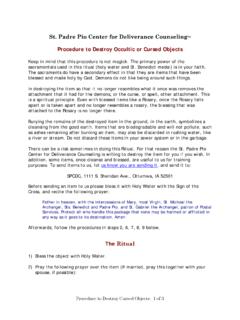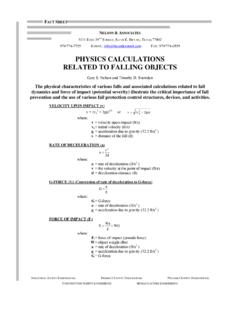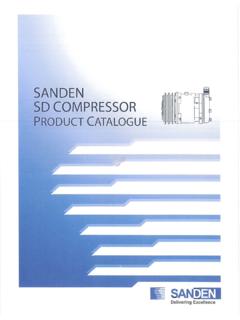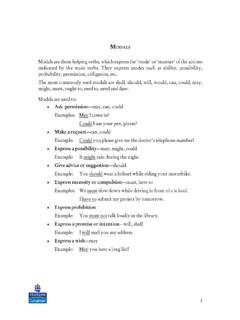Transcription of Motion of Objects - Virginia Department of …
1 Science Enhanced Scope and Sequence Grade 1 Virginia Department of education 2012 1 Motion of Objects Strand Force, Motion , and Energy Topic Observing the Motion of Objects and the effects of forces on them Primary SOL The student will investigate and understand that moving Objects exhibit different kinds of Motion . Key concepts include a) Objects may have straight, circular, and back and forth Motion ; c) pushes or pulls can change the movement of an object . Related SOL The student will demonstrate an understanding of scientific reasoning, logic, and the nature of science by planning and conducting investigations in which a) the senses are used to observe differences in physical properties; b) observations are made from multiple positions to achieve a variety of perspectives and are repeated to ensure accuracy; c) Objects or events are classified and arranged according to characteristics or properties; f) inferences are made and conclusions are drawn about familiar Objects and events; h) predictions are made based on patterns of observations; i) observations and data are recorded, analyzed, and communicated orally and with simple graphs, pictures, written statements, and numbers.
2 J) simple investigations and experiments are conducted to answer questions. Background Information Unbalanced forces cause Objects to move. The stronger the push or pull, the faster the object will move. Depending on the force, an object can go in a straight, circular, or back and forth Motion . Materials Various toys ( , a variety of balls, Objects with wheels, windup toys, tops, school owned and/or student owned playground equipment) to be included in a classroom Toy Motion Museum Kinds of Motion graphic organizer (attached) Student science journals Vocabulary force, Motion , circular, straight, back and forth Student/Teacher Actions (what students and teachers should be doing to facilitate learning) Introduction 1. Have students begin the activity by playing the game Statues.
3 One student leads by beginning a movement for all others to copy. When the lead student wishes, he/she calls, Freeze! The other students must stop all movement immediately to become statues. Science Enhanced Scope and Sequence Grade 1 Virginia Department of education 2012 2 2. After briefly playing this warm up game, bring students to the group meeting place and discuss the types of movements they performed. Discuss briefly that the purpose of the next activity is to discover what happens when they place a force on different Objects . Procedure 1. Spread out the toys which have been collected on a table to create a Toy Motion Museum. 2. Distribute copies of the attached Kinds of Motion graphic organizer. Explain that students will be studying how toys move and that they are going to become Motion museum scientists!
4 Have students add a simple drawing under each Motion word ( Straight, Circular, and Back and Forth ) on their graphic organizers to help them sort and remember different movements. 3. In the Question square, have students answer the question, What kind of movement happens when a toy is pushed or pulled? 4. Allow small groups of students to explore the Motion of the toys in the museum. Instruct them to predict how each toy will move when a pushing or pulling force is applied to it. Will the Motion be straight, circular, or back and forth? Then, let them test the toys to see how they are affected by pushing and pulling. Encourage students to share and take turns manipulating the toys. 5. After students have explored the toys, direct them to draw in the appropriate squares the toys that moved in straight, circular, or back and forth Motion .
5 6. Have students spend several minutes sharing their findings in pairs. 7. Using a large display copy of the graphic organizer, record the movements of the toys as students share their finding with the class. Discuss the results. Assessment Questions o Which kind of movement happened when a toy was pushed? When it was pulled? o Can a toy have more than one kind of movement? Journal/Writing Prompts o Write in your science journal what kind of movement happens when a particular toy or your choice is pushed or pulled. o Tell in your science journal which toy movements you liked the most and which you liked the least. Explain why. Other o With your toys at home, try pushing and pulling them and then describe what kind of Motion happens. Are there other ideas about the Motion of toys that you thought of while experimenting with the toys?
6 Extensions and Connections (for all students) Take the students on a walk in the school neighborhood, playground, or school building to look for additional examples of the three different kinds of Motion . Have them record their findings in their science journals. Have students use blocks to create a make believe playground. Then, have them identify which features of the playground will show one of the three kinds of Motion . Science Enhanced Scope and Sequence Grade 1 Virginia Department of education 2012 3 Demonstrate vibrations which are a back and forth movements that cause sound. Use different lengths of stretched rubber bands to make sounds at different pitches. Strategies for Differentiation Label the toys in the Toy Motion Museum to help learners recall the names of the Objects .
7 Make a picture guide for the type of Motion each toy shows. Use a jigsaw activity to form groups of similarly moving Objects . Science Enhanced Scope and Sequence Grade 1 Virginia Department of education 2012 4 Kinds of Motion Name: Date: Back and Forth Motion StraightMotionCircular MotionQuestion What kind of movement happens when a toy is pushed or pulled?

















